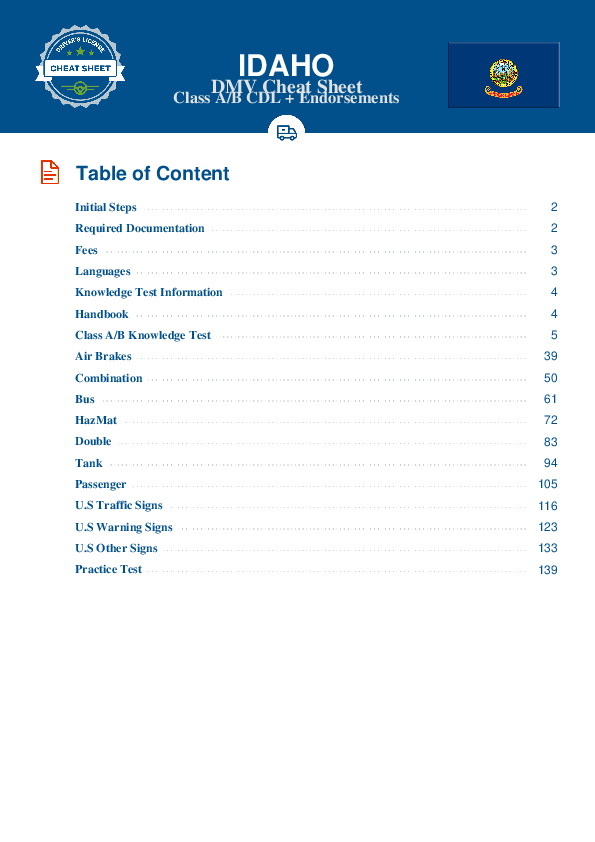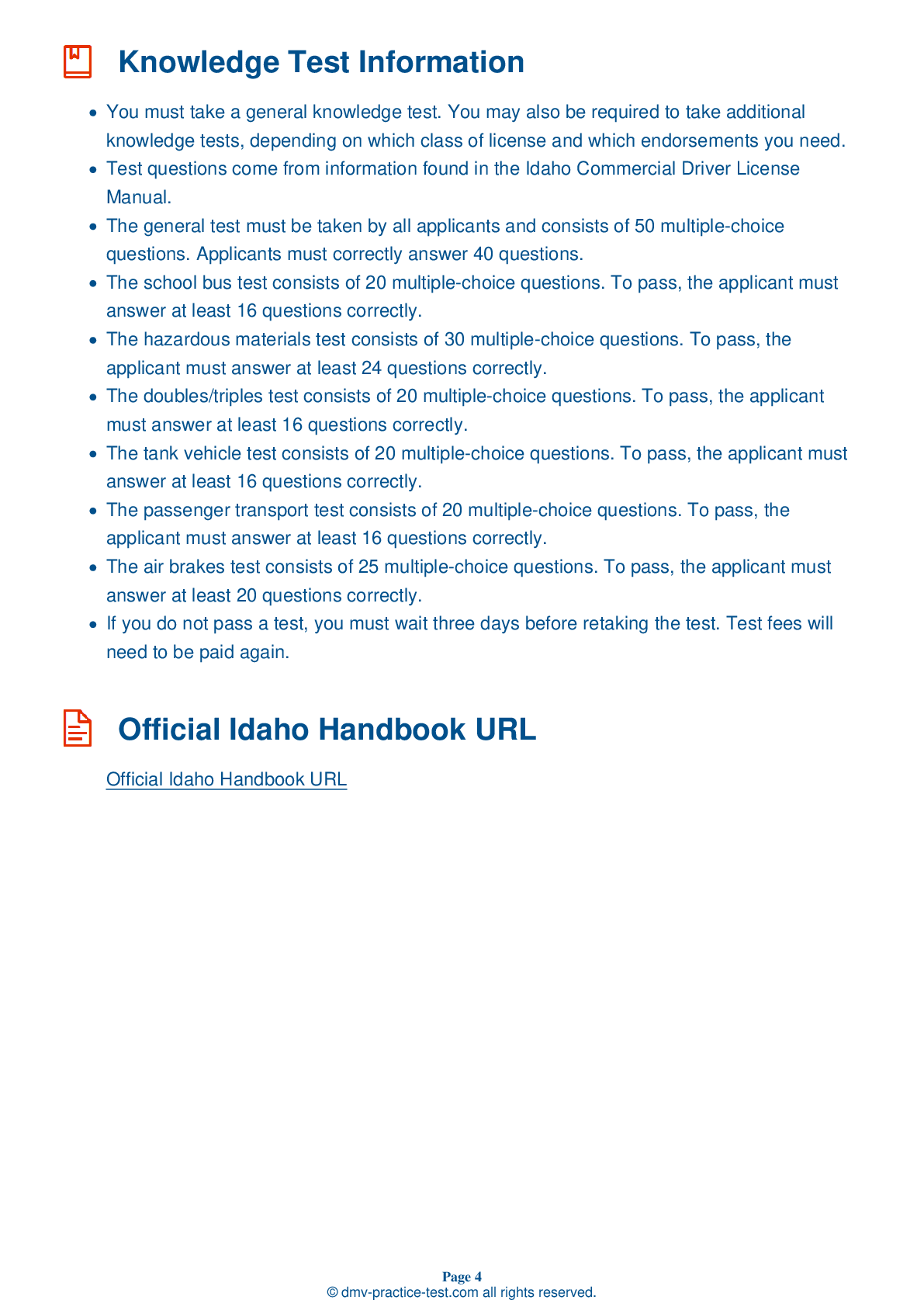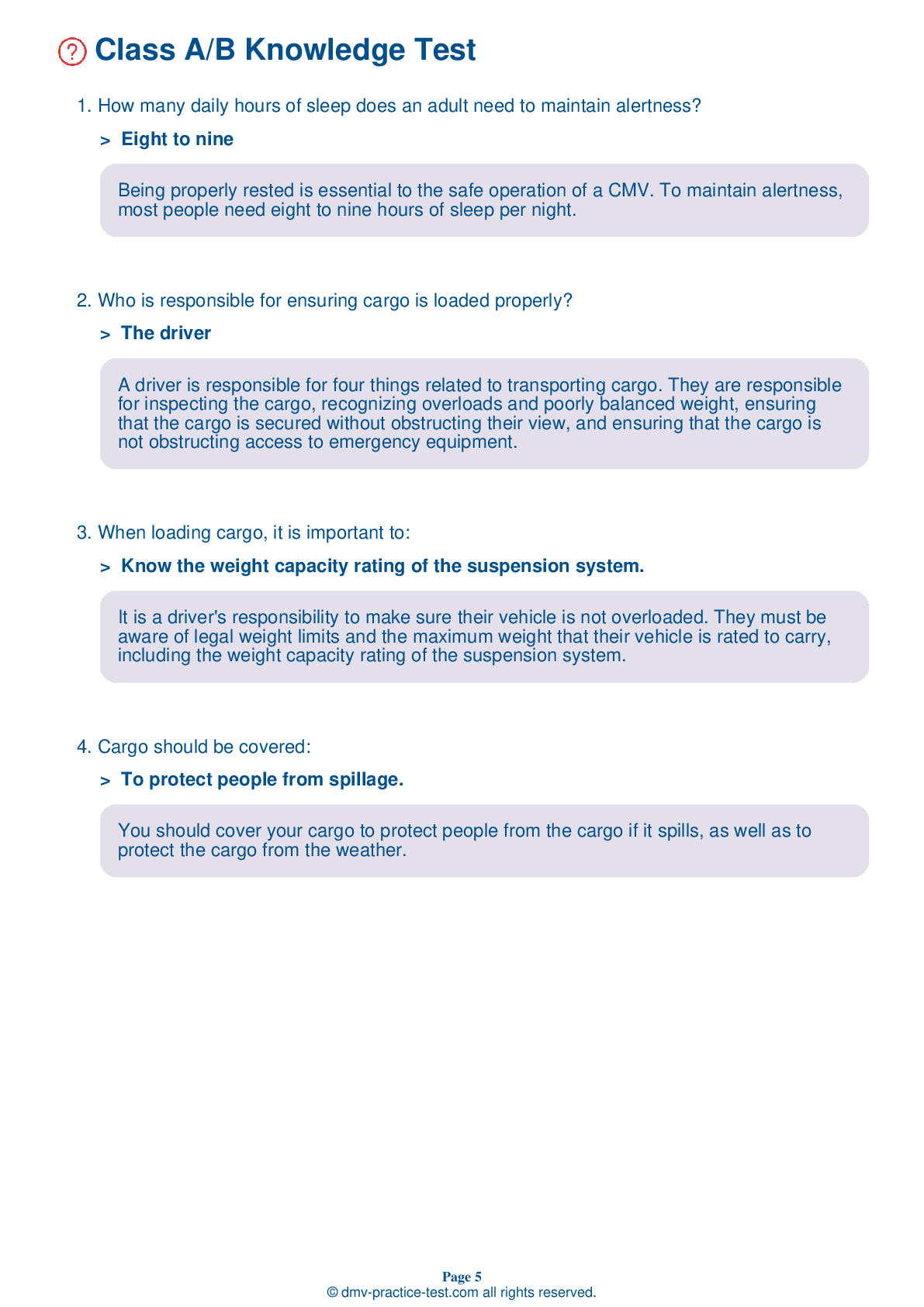Air Brakes Endorsement Test | Idaho 2025 #1 Page 2 of 4
Train for FREE online with our Idaho CDL air brake test. The official exam test consists of several obligatory parts, with all of them checking your knowledge of different blocks of road rules. If you need to obtain a ID Class A/Class B driver license in 2025, practice as much as possible. Free sample tests published on our website will help you check and improve your knowledge and boost your grades. Please bear in mind that the requirements for CDL may vary from state to state.
7 . When operating a vehicle with a dual air brake system, the driver should:
Before driving a vehicle with a dual air brake system, allow time for the air compressor to build up a minimum of 100 psi pressure in both the primary and secondary systems. Watch the air pressure gauges to monitor the pressure levels.
8 . What color light indicates a vehicle's ABS is not working?
On vehicles with Anti-Lock Braking Systems (ABS), yellow malfunction lamps alert the driver to ABS malfunction.
9 . What is brake lag?
Because air takes time to flow through the air lines to the brakes, air brakes cannot begin working instantly. There is often a brake lag of at least one-half of a second between the moment the brake pedal is pressed and the moment the brakes begin to work.
10 . The rods in S-cam brakes move the slack adjusters when air pressure is added to the brake chambers. This air pressure is added to the chambers when the driver:
When pressing the brake pedal in a vehicle with S-cam brakes, air will enter the brake chambers. The added air pressure will push out the rods and move slack adjusters, twisting the brake camshafts.
11 . An alcohol evaporator is especially important:
Some air brake systems contain an alcohol evaporator. This evaporator introduces alcohol into the system to help prevent ice from forming in cold weather.
12 . Air tank drains should:
In an air brake system, air tank drains are used to remove water and compressor oil from the air tanks. When operating a drain, be sure to drain the tank completely.
See the exact questions that will be on the 2025 Idaho DMV exam.
99.2% of people who use the cheat sheet pass the FIRST TIME
Lillian MCcranie explains how our CDL study guide was helpful in passing the exam and recommends it to everyone.
Cameron tells us how he purchased the CDL exam, and found it to be a useful tool which helped him pass the exam and find a job.



